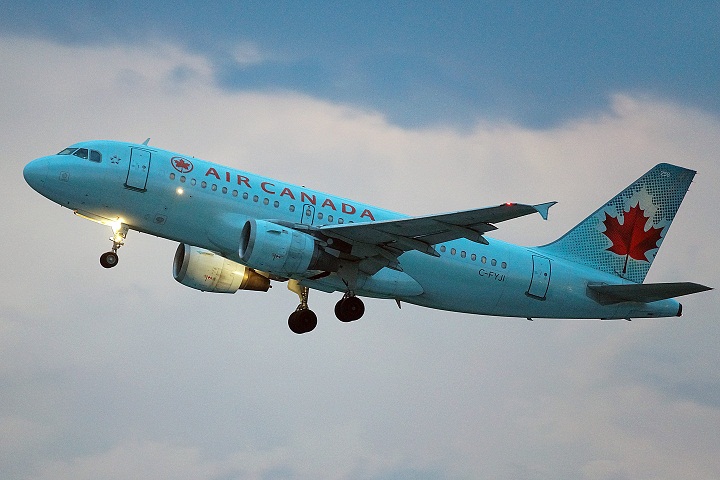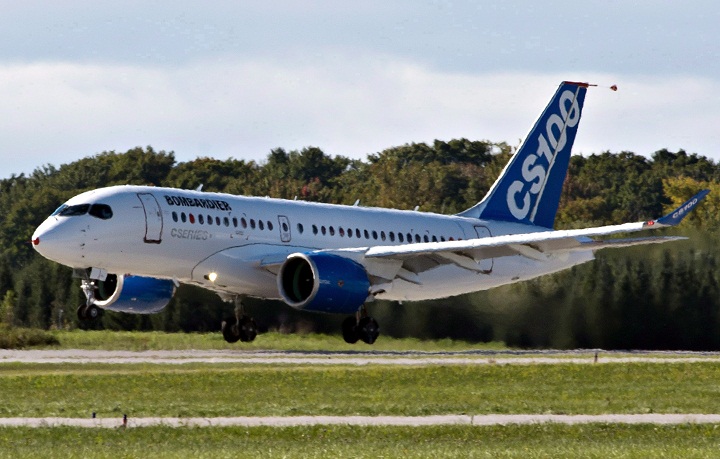MONTREAL — Air Canada has dealt a blow to Bombardier’s hopes of landing the country’s largest carrier as one of its first CSeries customers after deciding not to immediately replace its remaining fleet of Embraer E190s.

After selecting Boeing 737 MAX last year to replace 20 Embraers, the airline was looking at options for 25 planes that remain in its fleet.
However, it said Thursday that the 90-seat aircraft are still relatively young and it prefers to avoid more capital expenditures and debt as it focuses on adding 37 Boeing 787 Dreamliners and retrofitting 18 Boeing 777s with more seats.
“These 25 airplanes still have life to them and so we’ve determined to stay with that as well for the foreseeable future,” airline CEO Calin Rovinescu said during a conference call about its first-quarter results.
“Obviously when they are closer to end of life and the Airbus 319’s are closer to the end of life we can consider more narrow-body decisions then, but that’s not in the short term,”
Bombardier said it was disappointed by Air Canada’s decision, but is confident the aircraft is best suited for Air Canada’s needs once it eventually proceeds with buying new narrow-body aircraft.
“It’s not the preferred outcome at this time but we’re still optimistic and we still have a positive feeling about what’s to come,” said spokeswoman Marianella Delabarrera. “We’re putting this on the shelf as a future opportunity.”
Delivery of the 110- to 160-seat CSeries aircraft have been delayed until at least the second half of 2015. To date, Bombardier has received commitments for 447 CSeries aircraft from 18 customers in 15 countries, including 203 firm orders.
Porter Airlines is the lone Canadian CSeries customer to date, having placed a conditional order for 12 CS100 aircraft, with 18 options, worth about US$2.08 billion. However, the order is contingent on getting approval for a runway extension and permission to fly jets from Toronto City Centre Airport.
Tough financial times
Meanwhile, Air Canada reported a first quarter net loss of $341 million that was impacted by a lower Canadian dollar and a stormy winter.
The loss amounted to $1.20 per diluted share, compared to a net loss of $260 million, or 95 cents, in the same quarter last year.
The airline said the loss in the first quarter included foreign exchange losses of $161 million, versus foreign exchange losses of $40 million in the first quarter of 2013.
On an adjusted basis, the airline lost $132 million, or 46 cents per diluted share, one cent above analyst forecasts and compared with a loss of $143 million, or 52 cents per share, year-over-year.
Total revenues were up at $3.065 billion versus $2.952 billion year-over-year.
Air Canada said its earnings before interest, taxes, depreciation, amortization and impairment, and aircraft rent (EBITDAR) was $147 million compared with $145 million in the same quarter last year.
Rovinescu said the results were good given the weather and currency headwinds.
“(They) confirm that we’re ready to move from a period of survival and transformation to a period of investment, profitable growth and opportunity. Having achieved the needed stability we are now in a position to make substantial capital investments to increase our competitiveness, significantly lower our costs, grow the airline, and improve margins,” he told analysts.
Rovinescu said he’s pleased with the rollout of its low-cost Rouge carrier despite some consumer complaints, including negative tweets about leg room from actor Rob Lowe.
Being ranked the best airline in North America for each of the last four years, he said customer expectations are high.
“We need to do a better job of managing the customer expectation in transitioning from the expectations of Air Canada’s product to the product of a leisure carrier and a leisure carrier has a tighter pitch…and so we expect this to be a question that will improve with the passage of time.”
RBC Capital Markets analyst Walter Spracklin said the airline’s EBITDAR was in line to slightly better than the guidance Air Canada had provided, but the 2.5 per cent reduction in costs beat expectations. The airline now expects full-year CASM excluding fuel will decrease three to four per cent, compared to its earlier guidance of a drop of 2.5 to 3.5 per cent.
“Accordingly, we believe Air Canada’s cost transformation strategy is tracking ahead of management (and our) expectations and we expect this guidance update to be well-received by the market,” he wrote in a report.
On the Toronto Stock Exchange, Air Canada’s shares lost 42 cents or 5.11 per cent at $7.80 in Thursday morning trading.



Comments